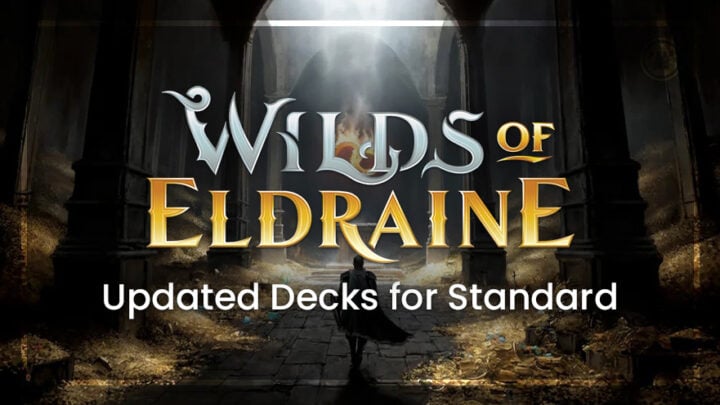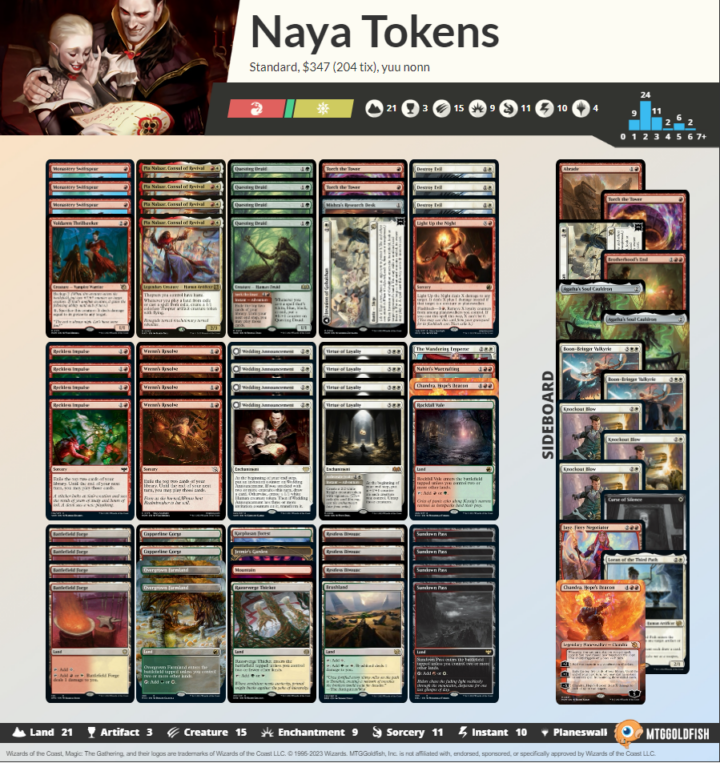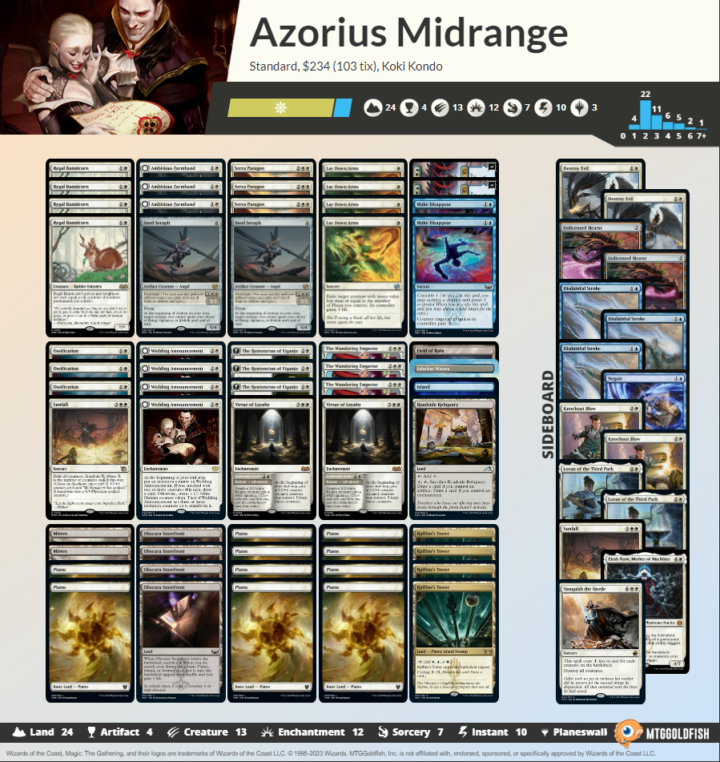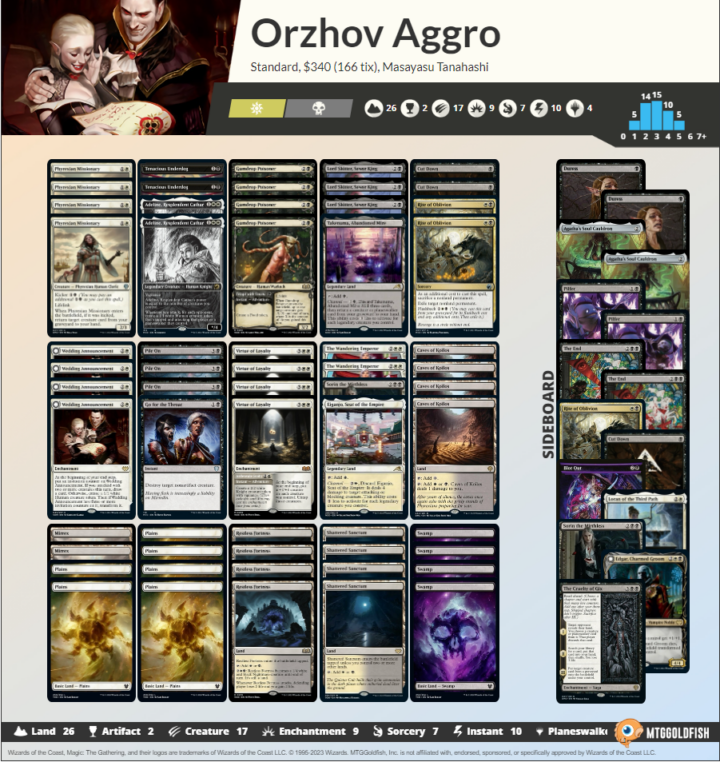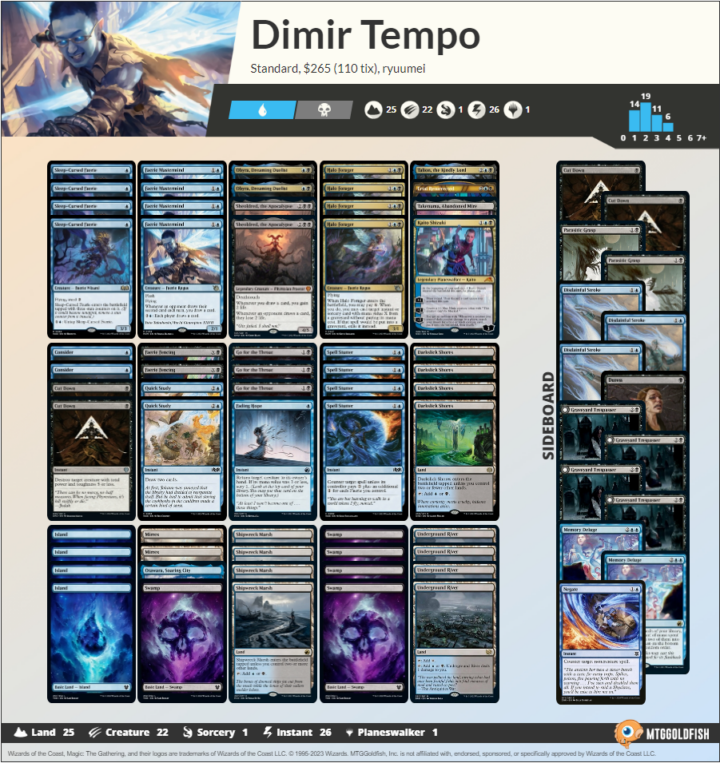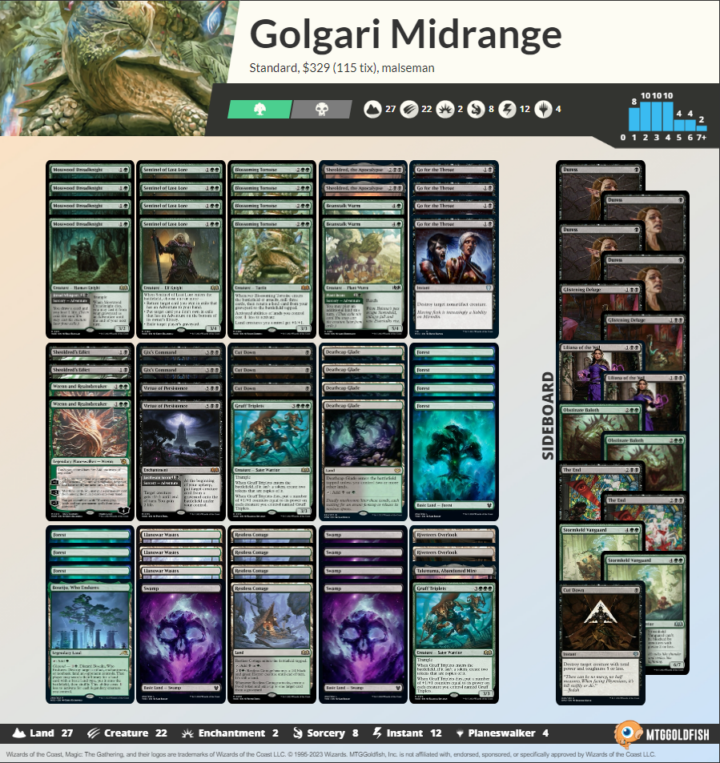I’ve been keeping a close eye on the early Standard decks post-Wilds of Eldraine, and I’m sure I’m not the only one with great expectations. The original Throne of Eldraine was among the most impactful sets ever, immediately reshaping not only Standard but every other format, too.
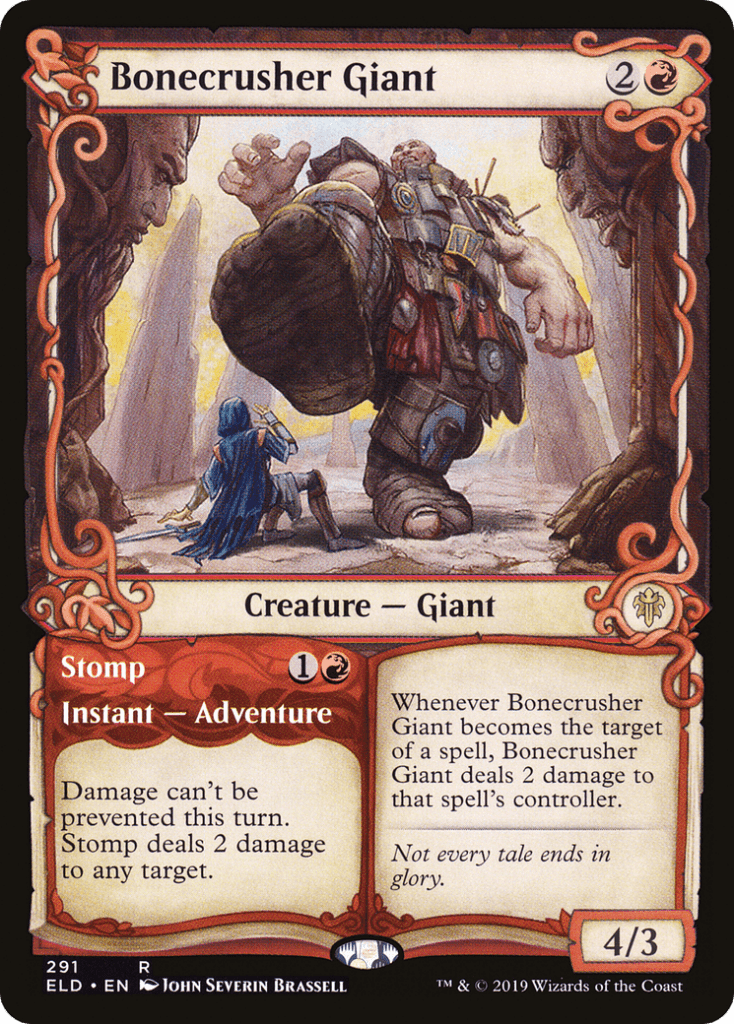
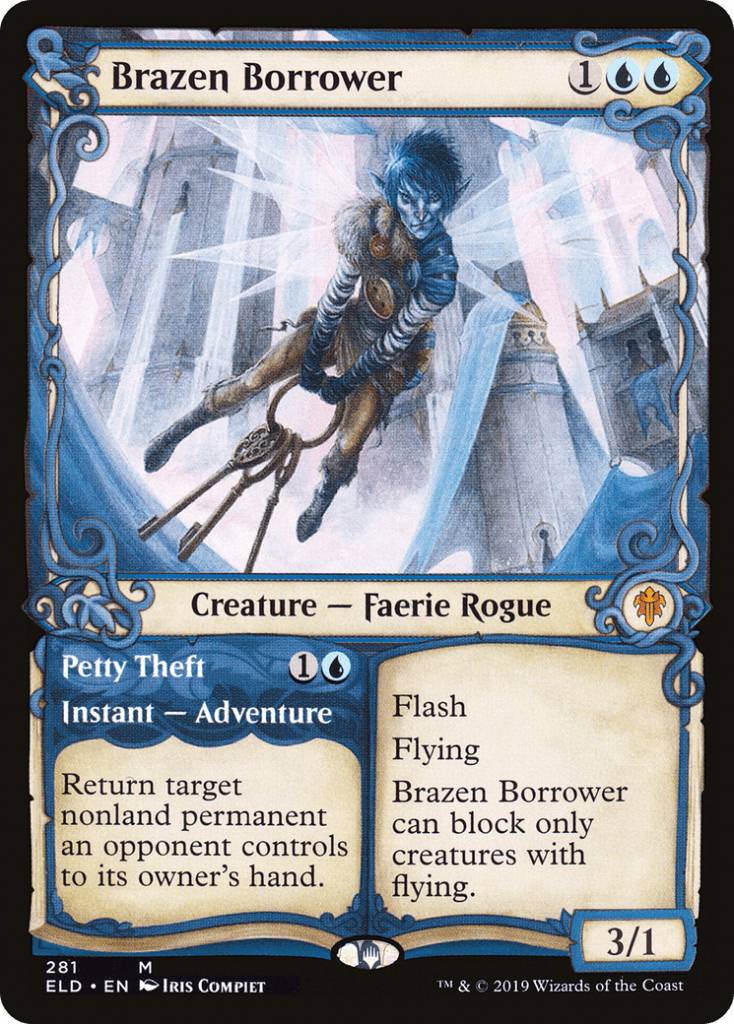
Wilds of Eldraine doesn’t seem to include must-ban outliers on the level of Once Upon A Time or Oko, Thief of Crowns — but it does include Eldraine’s powerful signature mechanic: adventures. Standard players who don’t want to be playing against the same black midrange decks for another year are hoping Wilds can offer even a couple of cards on the level of Bonecrusher Giant, Brazen Borrower and Lovestruck Beast.
It’s still too early to know the long-term outlook, but these first few decks have given me a lot more hope that Wilds of Eldraine will measure up to its illustrious predecessor.
Virtue of Loyalty is doing work
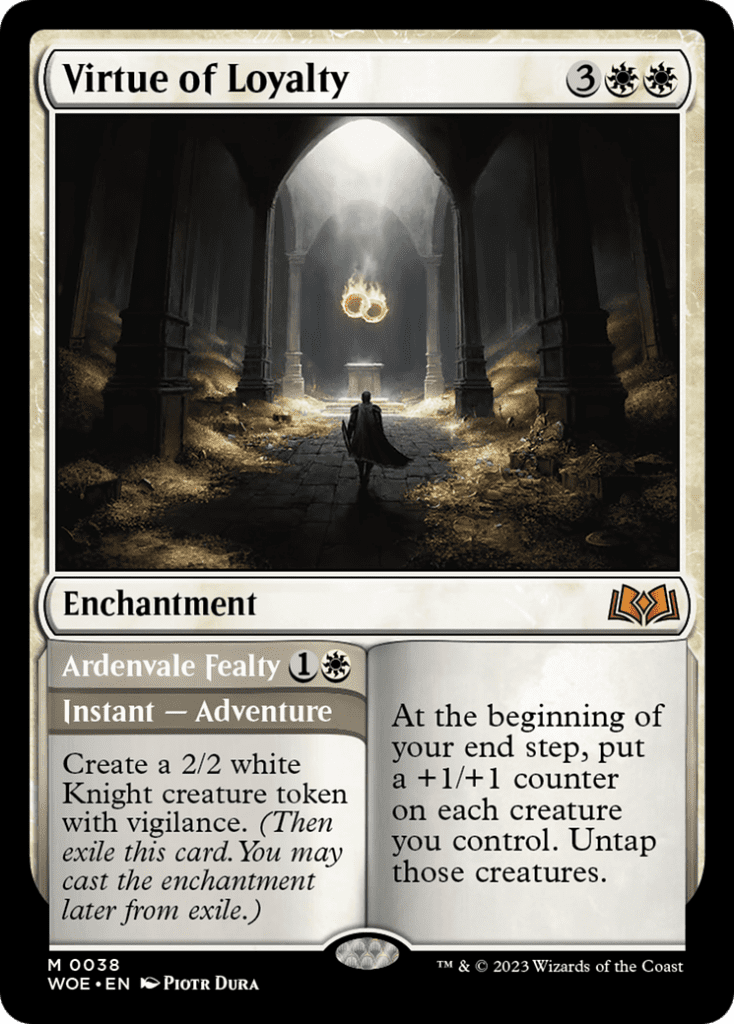

The most interesting adventure cards in Wilds of Eldraine are the Virtue cycle, which adds that inherent split-card flexibility to powerful win-con enchantments.
Playing a card like Virtue of Loyalty or Virtue of Persistence just to hard cast the enchantment probably wouldn’t be viable. But the adventures turn them into a replacement-level filler effect that buys you a “free” win condition for the endgame!
That kind of low-risk, high-reward proposition means these Virtues are going to see play anywhere that the enchantment side is valuable, and the most widely-valuable one for Standard is Virtue of Loyalty.
A significant fraction of the early WOE Standard decks have just been players trying to find the best second color to build around a sturdy white tokens package. My favorite is this red/white build that took out a massive MTG Melee event by pairing Virtue of Loyalty with Pia Nalaar, Consul of Revival.
For a deck that just wants to flood the board as fast as possible, playing cards like Wrenn’s Resolve and Reckless Impulse is already a good idea, and getting free Thopters for doing so is amazing. The adventure cards from Wilds give you even more Pia triggers, and you can even “bank” them up in the adventure zone to have a guaranteed burst of momentum when you next get her into play.
I also like that both Questing Druid and Virtue of Loyalty are great fits for this game plan on their front side, helping the deck to go tall and even threatening to steal some games with the fun-of Voldaren Thrillseeker.
Let us also not ignore the presence of Torch the Tower, a very powerful removal spell that should be taking over the Strangle/Flame-Blessed Bolt slot in the 75 for many red decks. Agatha’s Soul Cauldron may not be quite as universal, but it definitely seems like a great sideboard inclusion given the synergy with Virtue.
Alternative Virtue of Loyalty builds which found traction over the weekend include a UW tokens build that pairs it with Regal Bunnicorn and Invasion of New Phyrexia:
There’s also this sweet white/black deck list:
Virtue of Loyalty seems at its best when your creature deck is able to drag out games, and the lifegain package of Gumdrop Poisoner and Phyrexian Missionary certainly offers that! Here, Lord Skitter, Sewer King takes the place of Pia Nalaar as a way to stockpile creature tokens, making the eventual Virtue drop even more devastating.
The rat king’s inherent graveyard hate is supplemented by, again, Agatha’s Soul Cauldron, and we can also see The End being trialed as an answer to one-trick Atraxa decks.
I can see a case for trying even more Wilds cards here! Virtue of Persistence is easily the next-best in the cycle, and Restless Fortress has synergy with both Poisoner and Virtue. And if these Virtue of Loyalty token decks do stick around as a presence in Standard, Shrouded Shepherd seems like great tech for the mirror.
You can build around Faeries
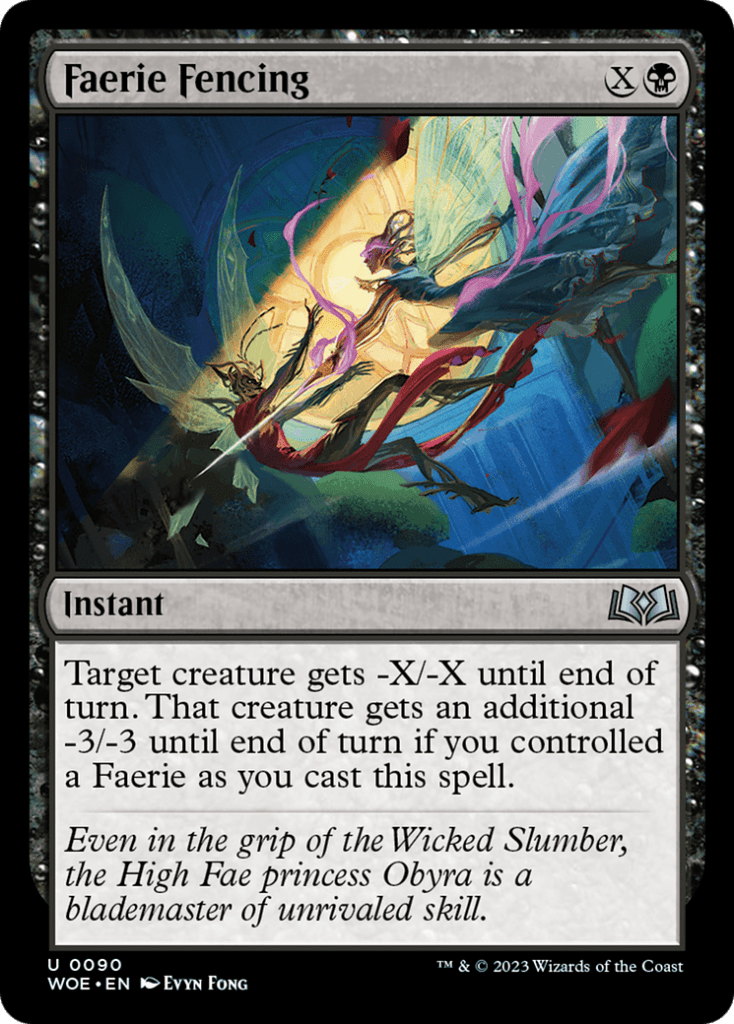
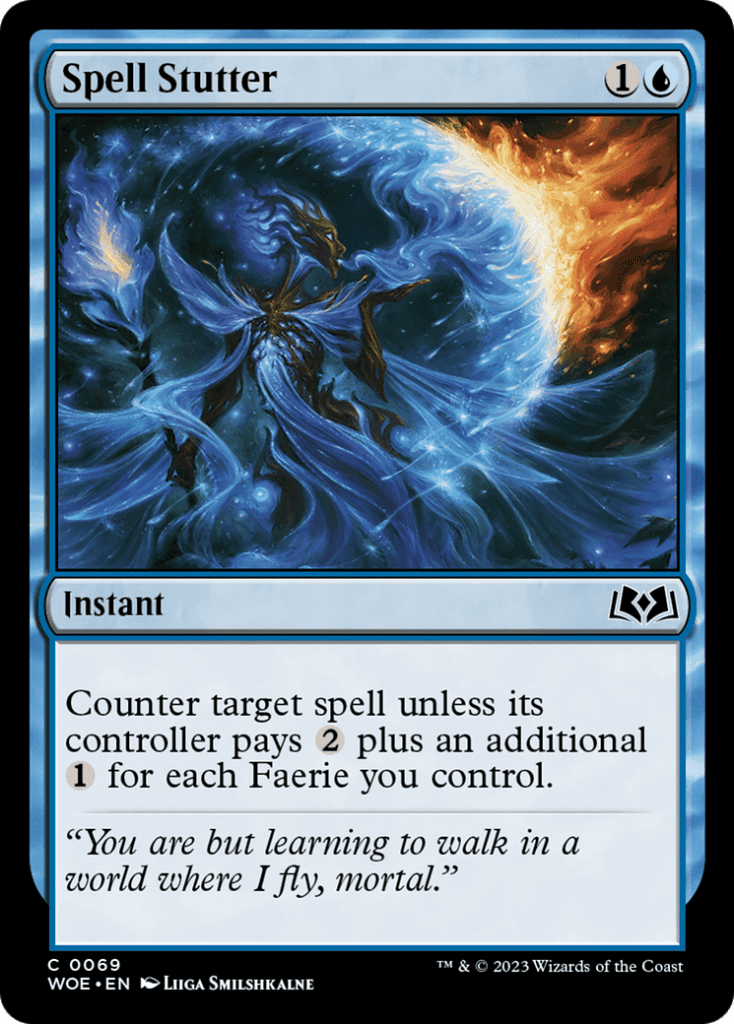
While we’re talking about Standard cards with significant historical baggage, the inclusion of a blue/black Faeries theme in Wilds of Eldraine all but guaranteed someone would try to make it work in Constructed. Spell Stutter at least seems very comparable to existing staple Make Disappear, but Faerie Fencing is a much bigger gamble — albeit one with an exciting payoff.
At least you only need a handful of actual Faerie creatures to make those cards good, and we already had some strong options in Standard with Faerie Mastermind and Halo Forager.
From WOE itself, Sleep-Cursed Faerie seemed like a hard lock to at least make the 75 for tempo decks, with or without additional Faerie support. But I was hugely impressed to see a full blue/black Faeries deck post results with not only all the cards I just mentioned, but also Obyra, Dreaming Duelist, Quick Study and even Talion, the Kindly Lord!
It’s a list incredibly dependent on synergies, so be careful about changing anything here if you’re trying it out at home. But the appeal of Halo Forager flashing back Faerie Fencing is undeniable. If that part of the deck doesn’t work out long term, you can always go back to a heavier emphasis on the proven Sheoldred/Ertai/Faerie Mastermind package, potentially swapping in Likeness Looter to both empower and duplicate the powerful Praetor.
The other big question for this deck is whether there’s any chance of running Ego Drain, the third big Faerie support card from Wilds. As a Thoughtseize effect that essentially can’t be played turn one, it seems like a tough ask to ever make the main deck. But if you find yourself in a hand-based matchup, like a combo deck or a blue mirror, then Ego Drain seems like a big add for your Halo Forager package — basically Faerie Fencing for non-creature decks.
Yes, your opponent might be able to kill your last Faerie in response and force the self-exile, but that still takes a second card out of their hand, and Forager lets you exert a lot more control over when you’re vulnerable to that clause anyway. I’d at least give Ego Drain a chance in testing before I give up on such a powerful tool.
Green Midrange is the New Black
The other archetype that seems to have been revitalized by the injection of Wilds cards is classic green-based fair decks, just playing their best cards all the way up the curve. I had been expecting those decks to bounce back since March of the Machine, but it turns they were waiting for Mosswood Dreadknight!
Along with the staple black removal suite, Dreadknight gives us a rock-solid foundation that happily soaks up opposing removal and small creatures while you build to bigger things. Those “bigger things” slots appear very flexible depending on who builds the deck, but a lot of the good options are other Wilds cards: Beanstalk Wurm and Blossoming Tortoise for ramp; Sentinel of Lost Lore, The End and Stormkeld Vanguard as interaction and sideboard tech; and Gruff Triplets as a top-of-curve finisher.
Other successful deck builders chose a more planeswalker-centric game plan, but all of them made sure to include multiple Virtue of Persistence.
As another grindy deck looking to simply outvalue opponents over time, these GB lists are perfectly positioned for that kind of card. The full set of Restless Cottage in the land base also embodies that focus on “high-floor” cards and the ability to present more threats than your opponent has answers.

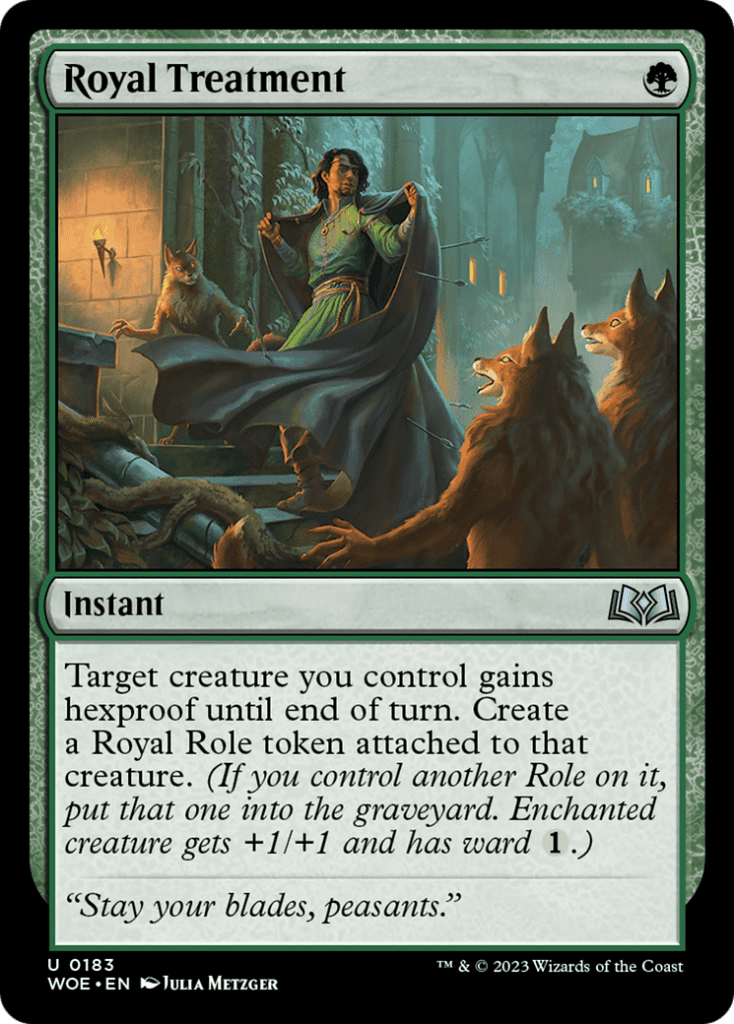
The Huntsman’s Redemption hasn’t yet seen widespread adoption, but I have a hunch it will find its way here if the deck maintains relevance. The combination of efficient creature stats plus the option of fixing your draws reads very similarly to Dreadknight itself, ensuring a consistent curve of suffocating pressure in as many games as possible.
Finally, Faunsbane Troll and Royal Treatment seem like very harmonious fits for the sideboard. The latter card has already posted multiple results across different green archetypes.
WEEK ONE OF STANDARD IS ALWAYS WILD
It does seem like Wilds of Eldraine is destined to leave a significant mark on Standard despite the high bar set by the existing card pool. It’s far too soon to say which of these archetypes will continue to post numbers once this naturally experimental post-release period is over, but at the very least cards as powerful and flexible as the Virtues, Gruff Triplets and Lord Skitter are going to find a home in whatever’s being played.
There’s actually a ton of other examples already of individual Wilds cards being picked up as incremental upgrades for familiar decks: Up the Beanstalk in Atraxa decks that play Leyline Binding; Yenna, Redtooth Regent in GW Enchantments; Spellbook Vendor in Mono-White aggro.

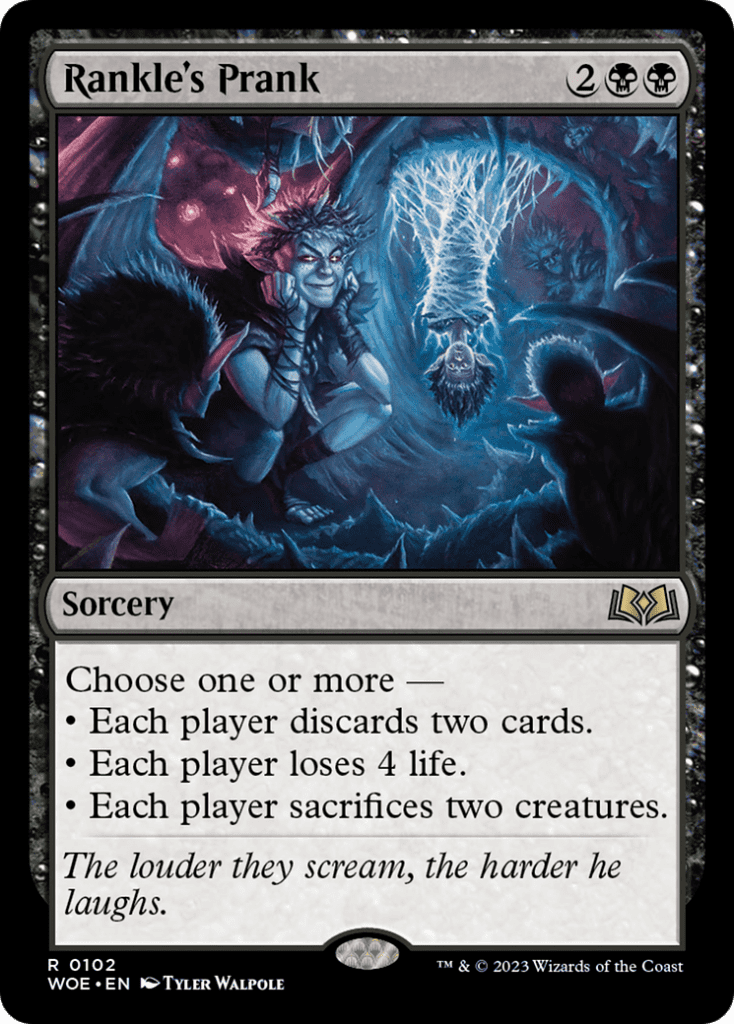
Inventive mono-black players are also including Spiteful Hexmage and Hopeless Nightmare as ways to get easy draws off Braids, Arisen Nightmare, and using Beseech the Mirror to option their way into Sheoldred, planeswalkers, sideboard cards or a sneaky Rankle’s Prank!
That kind of creative synergy hints that there may be room for many bargain spells to find a home in Standard, too. For now, though, the reliability and flexibility of adventures has once again proven too valuable to be ignored, and thus guaranteed that we’ll be talking about Wilds of Eldraine for many months to come.

Tom’s fate was sealed in 7th grade when his friend lent him a pile of commons to play Magic. He quickly picked up Boros and Orzhov decks in Ravnica block and has remained a staunch white magician ever since. A fan of all Constructed formats, he enjoys studying the history of the tournament meta. He specializes in midrange decks, especially Death & Taxes and Martyr Proc. One day, he swears he will win an MCQ with Evershrike. Ask him how at @AWanderingBard, or watch him stream Magic at twitch.tv/TheWanderingBard.

